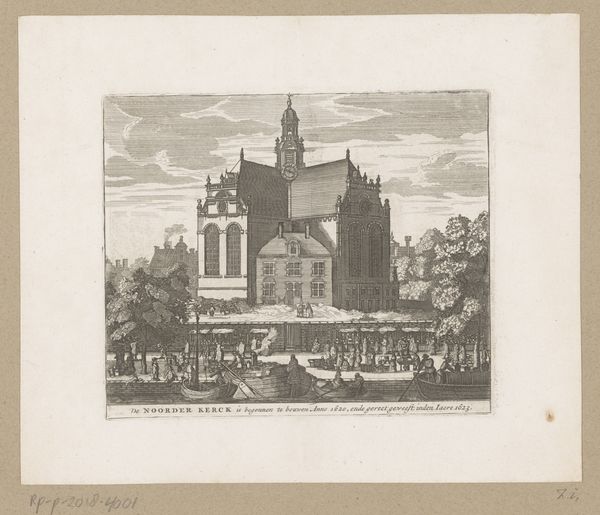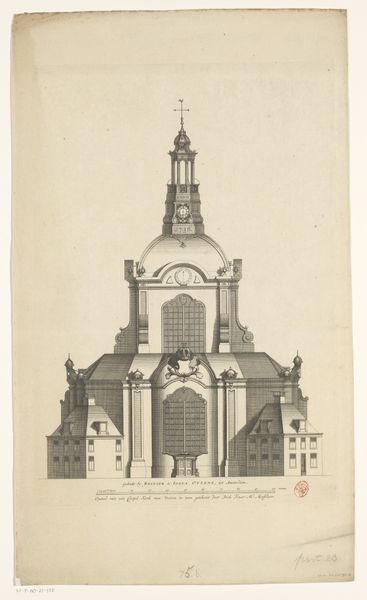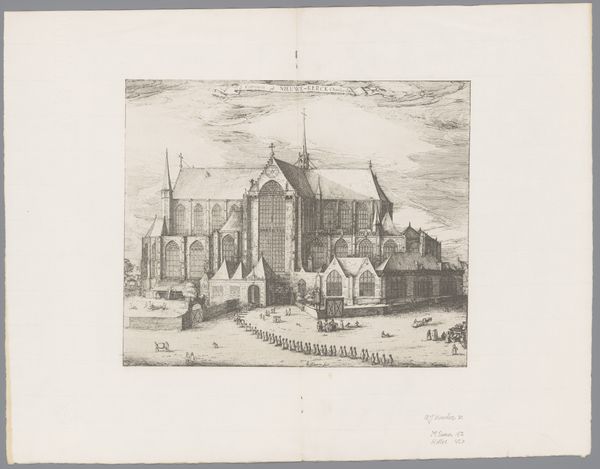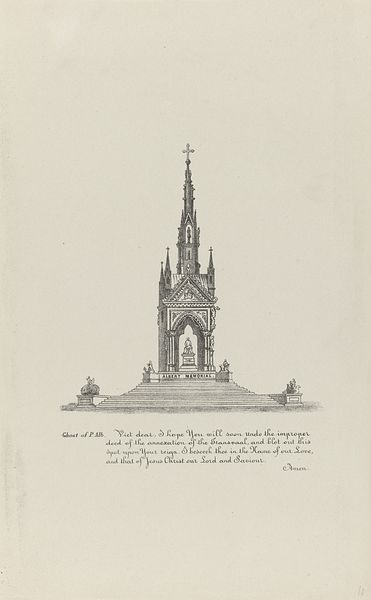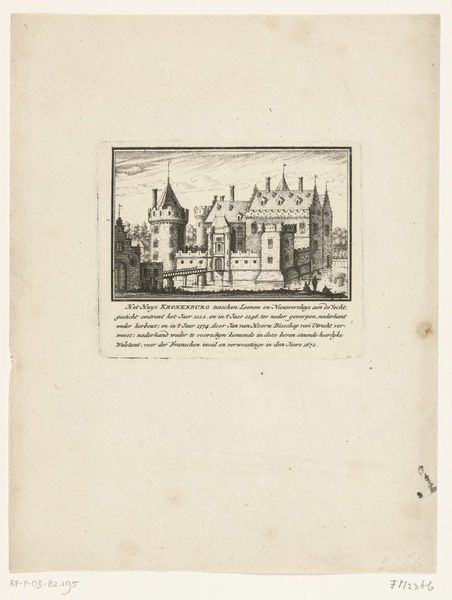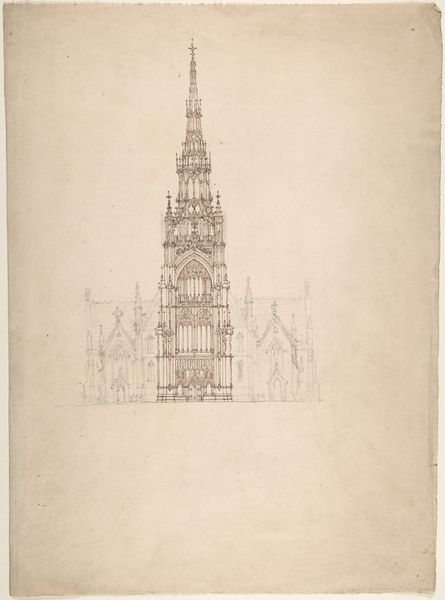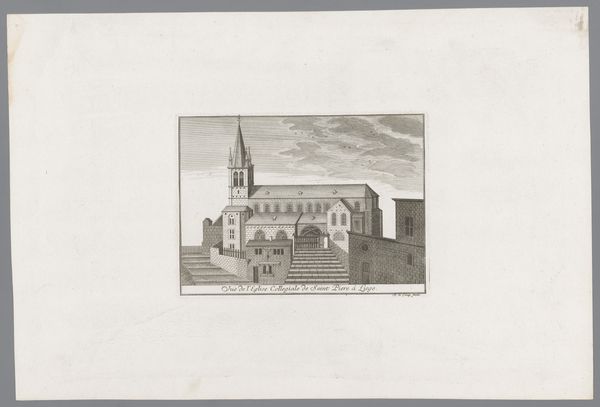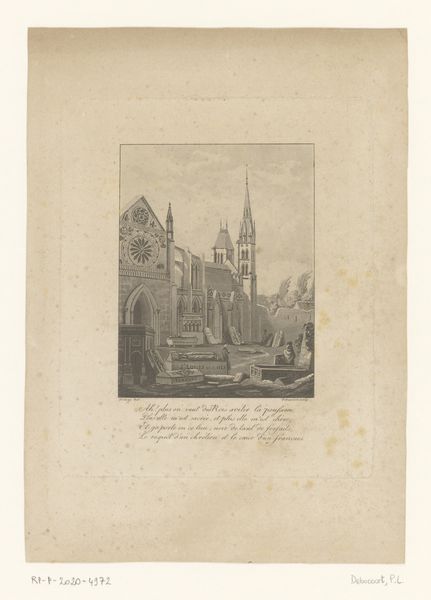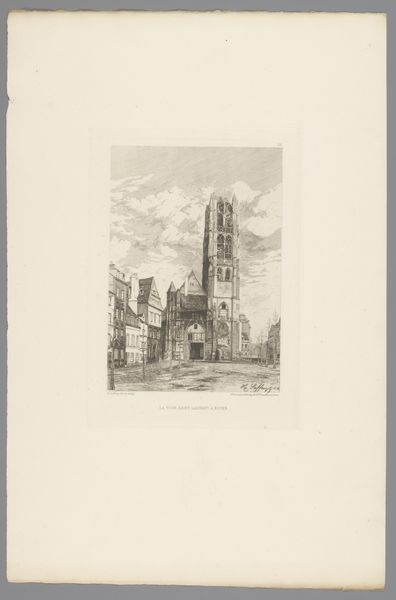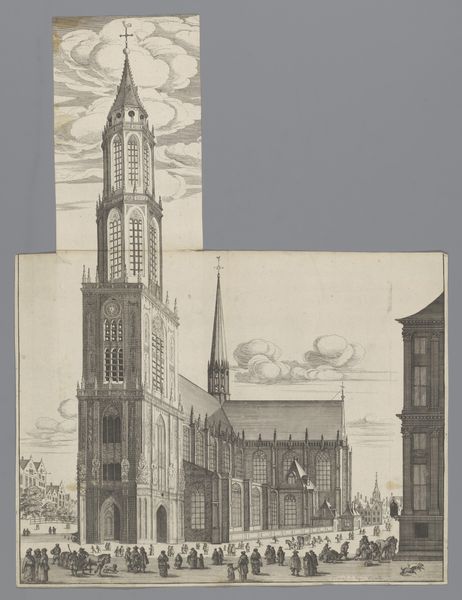
drawing, print, etching, paper, engraving
#
drawing
# print
#
etching
#
landscape
#
paper
#
cityscape
#
early-renaissance
#
engraving
Dimensions: height 282 mm, width 223 mm, height 525 mm, width 418 mm
Copyright: Rijks Museum: Open Domain
Editor: This is Pieter Bast’s "View of the Town Hall of Middelburg," dating back to 1595. It's an etching on paper, currently held at the Rijksmuseum. I'm struck by its architectural detail and how it captures the grandeur of the building. How do you interpret this work? Curator: Well, beyond the immediate visual impact, it's vital to consider the context. The Dutch Republic was in formation at this time, a period of intense social and political upheaval. The town hall, as a symbol of civic authority, becomes inherently political. Do you see how the artist meticulously renders the building's façade? Editor: Yes, it’s incredibly precise! Curator: It's more than mere documentation. Consider what the town hall *represents* - civic pride, burgeoning merchant power, and a rejection of aristocratic rule. This image, circulated as a print, disseminates those values and solidifies a collective identity. Think of the power structures implied in this depiction. Who were the burghers, and who was excluded? How does this image contribute to ideas about citizenship and belonging in the nascent Dutch Republic? Editor: That’s fascinating! I hadn't considered how seemingly simple architectural rendering could be loaded with so much socio-political meaning. I was initially just drawn to its aesthetic qualities, but now I see how deeply rooted it is in the context of its time. Curator: Exactly. This etching isn't just a picture; it's an artifact of a society defining itself, celebrating its accomplishments while implicitly obscuring its internal inequalities. Reflecting on this work reminds us that every artistic decision carries historical and social weight, often unintentionally.
Comments
No comments
Be the first to comment and join the conversation on the ultimate creative platform.
